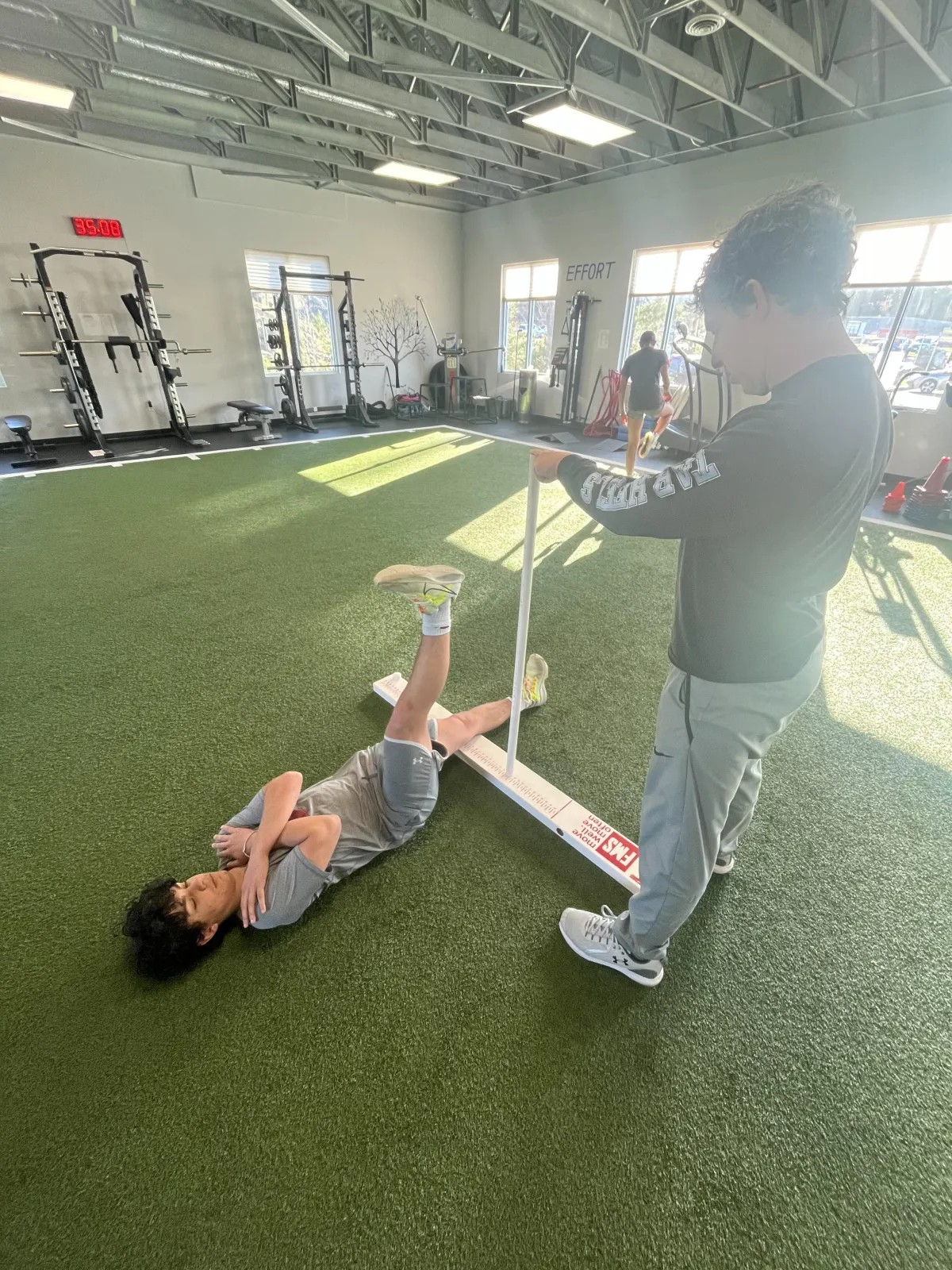ATHLETE BLOG LEOMINSTER

The 3 Most Revealing Results From Our Injury Prevention Study
When we moved into our new facility back in 2019, the plan was to use our one extra room as an office.
But when you rarely throw old things out, any extra space quickly becomes needed for storage.
That includes a file cabinet overflowing with all of the Functional Movement Screen (FMS) results we've done over the last ten years.
The FMS is the injury prevention tool we use to analyze areas of high risk for future problems.
It's what every new athlete goes through on their first day with us.
Recently a new parent asked me, "How many athletes actually pass each of these tests?"
I couldn't give even a ballpark guess.
It was then that I knew it was time to use all the data we collected to provide better answers in moments like this.
So we analyzed scores from 538 athletes.
Seeing as how university fitness research often relies on just 100-200 subjects, it felt like we had enough info to provide some useful insights.
These are the three that stood out most:
1) Ankle Mobility Is Our #1 Movement Issue
The FMS evaluates flexibility at three key joints - the shoulders, hips and ankles - where tightness would signal the highest injury risk.
it also analyzes your midsection's ability to maintain good posture, another major risk factor, with two tests.
Here's how our athletes did:
Shoulder Mobility - 63% Passing
Hip Mobility - 43% Passing
Ankle Mobility - 32% Passing
Trunk Stability (Pushup) - 48% Passing
Rotational Core Stability - 48% Passing
Our population range of age 10 to 19, somewhat surprisingly, score lowest with ankle flexibility.
Tightness at the ankle joint would obviously raise the risk of sprains there, but it's also a big reason why an athlete may have knee problems as well.
Those aren't the only potential problems.
If you want a deeper dive, you can check out one of our previous blog posts which covers ankle issues in more detail:
Power Source Blog - 4 Reasons To Be Concerned With Poor Ankle Flexibility
2) Almost All Shoulder Mobility Issues Were Sport-Specific
If you don't play baseball, softball or basketball, the chances you passed the shoulder mobility test were nearly 100%.
The shoulder is an extremely mobile joint by nature, but extreme overuse in throwers and basketball shooters can cause tightness.
The results we saw are further tied to their sport based on the fact that the tightness almost always shows up just in the throwing or shooting arm.
Once again, limited movement at one joint usually causes problems at the other ones nearby.
Just like ankle tightness raises knee injury risk, the same goes with shoulder tightness and elbow problems.
When you can't move naturally at one joint, it puts more stress on those around it.
And that's where blowouts eventually occur.
3) There Were Also Clear Trends By Gender
Nearly 3/4 of the core stability deficits were found in our female athletes.
Males accounted for about 3/4 of the hip flexibility limitations.
I don't have any rational explanation for why this is, it's simply what we see time and time again.
It still doesn't mean you can apply a one-size-fits-all solution to injury risk, but these findings should help coaches apply some general best practices.
If you coach a boys team, place a premium in your warm up time on properly executed stretches for the hips and ankles.
If you coach a girls team, make sure to add lots of core and hip strengthening to your practices, at the expense of stretching if needed.
Really, the solutions to all of these concerns are extremely simple whether you coach athletes or not.
If you have limitations in flexibility or core strength, regularly apply targeted exercises to fix the issue.
It's no different than going for extra help in a specific subject where your grade isn't up to par, as opposed to simply showing up to school a couple hours early with no real plan for how to improve.
Identify risk factors.
Apply proven methods for addressing the specific issue.
Monitor the results over time, and make changes as needed.
Power Source Reviews
© Copyright 2025. Power Source. All rights reserved.
|
